ABBREVIATIONS
AP-1
COX-2
ERK
GAPDH
IL-1β
IL-6
iNOS
JNK
LPS
TLR-4
MAPK
NF-κB
NO
PARP
INTRODUCTION
METHODS
Chemicals and reagents
Cell culture and cell viability assay
Measurement of nitrite, PGE2 and cytokines
Quantitative real-time reverse-transcription polymerase chain reaction (qRT-PCR)
Western blotting analysis
Statistical analysis
RESULTS
Compound screening
Compound 4 inhibits NO and PGE2 release
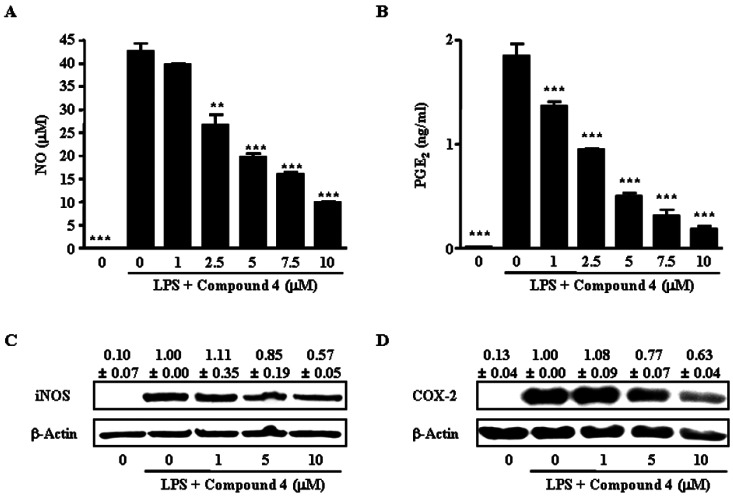 | Fig. 3Effects of compound 4 on LPS-induced NO and PGE2 release. RAW264.7 cells were treated with 0~10 µM of compound in the presence of 100 ng/ml of LPS or with LPS alone for 24 h, and (A) NO and (B) PGE2 release was determined. The results are reported as mean±SEM of three independent experiments in triplicate. Statistical significance is based on the difference when compared with LPS-stimulated cells (**p<0.01, ***p<0.001). Thirty micrograms of protein obtained from each cell lysate was resolved by 10% SDS-PAGE for (C) iNOS and (D) COX-2 determination. β-actin expression is shown as a loading control. The bands were quantified using image analysis software and their relative intensity was expressed as fold against the image of the LPS-stimulated RAW264.7 cells. |
Compound 4 blocks the release of pro-inflammatory cytokines
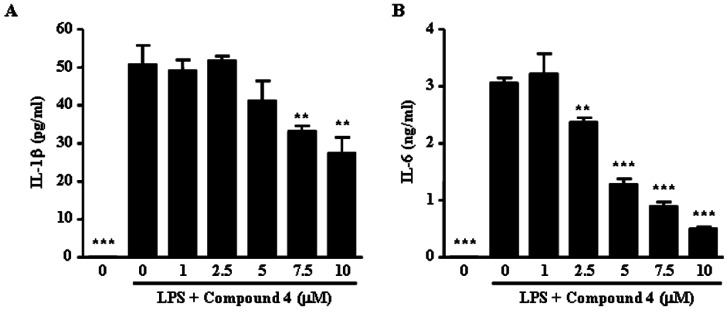 | Fig. 4Effects of compound 4 on LPS-induced inflammatory cytokine production in murine macrophages. RAW264.7 cells were treated with 0~10 µM of compound 4 in the presence of 100 ng/ml LPS or with LPS alone for 24 h. The cell culture media were then collected, and the amount of (A) IL-1β and (B) IL-6 released was measured. The results are reported as mean±SEM of three independent experiments in triplicate. Statistical significance is based on the difference when compared with LPS-stimulated cells (**p<0.01, ***p<0.001). |
Compound 4 suppresses the mRNA expression of iNOS, COX-2, IL-1 β and IL-6
Table 2

RAW264.7 cells were cultured with 0~10 µM compound 4 in the presence or absence of LPS (100 ng/ml) for 6 h and gene expression was quantified by real-time RT-PCR as indicated in Materials and Methods. Statistical significance is based on the difference when compared with LPS-Stimulated cells (*p<0.05, **p<0.01, ***p<0.001).
ND, not detected.
Compound 4-reduced inflammatory mediator release is regulated by MAPK and AP-1
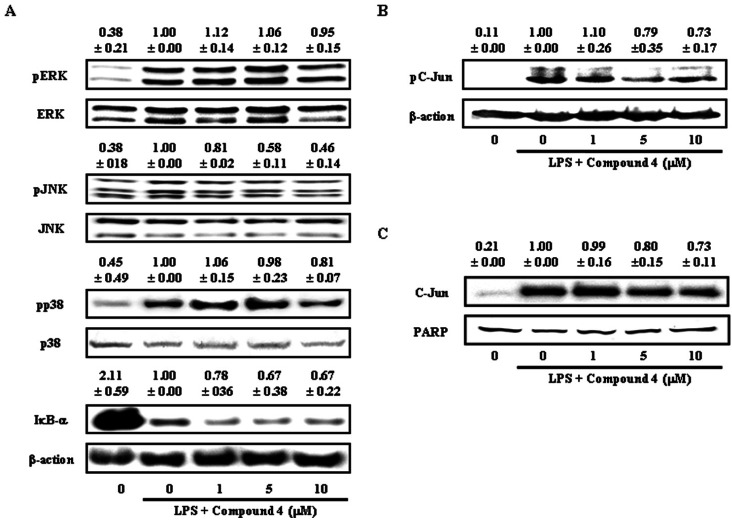 | Fig. 5Effect of compound 4 on LPS-induced MAPK and AP-1 activation. RAW264.7 cells were plated in 100 mm-diameter dishes. After 12 h of seeding, cells were treated with different doses of compound 4 for 1 h, followed by stimulation with 500 ng/ml of LPS for 30 min. Cell lysates (30 µg protein) were prepared and subjected to Western blot analysis by using antibodies specific for (A) IκB-α, phosphorylated forms of ERK1/2, JNK, p38 MAPK and (B) phosphorylated forms of c-Jun. Equivalent loading of cell lysates was determined by reprobing the blots with anti-β-actin, total ERK1/2, JNK or p38 MAPK antibody. (C) Nuclear protein (30 µg protein) was prepared and subjected to Western blot analysis by using antibodies specific for c-Jun and equivalent loading of nuclear protein was determined by reprobing the blots with anti-PARP. The bands were quantified using image analysis software and their relative intensity was expressed as fold against the image of the LPS-stimulated RAW264.7 cells. |




 PDF
PDF ePub
ePub Citation
Citation Print
Print


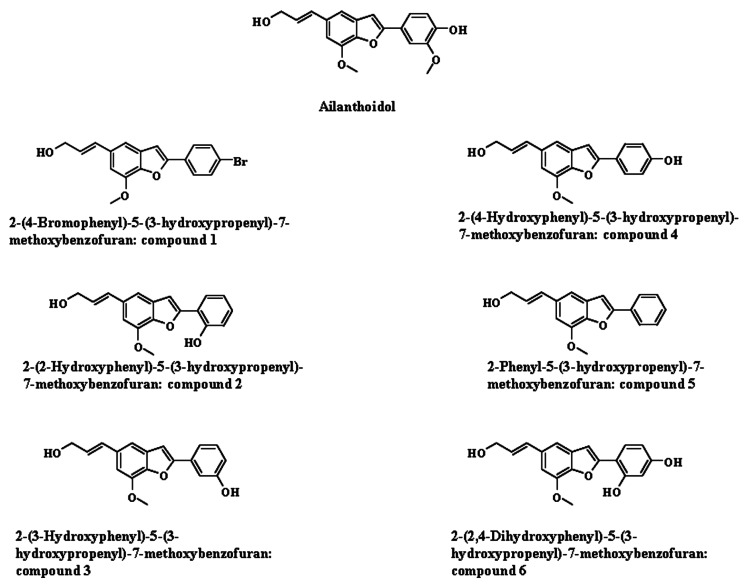

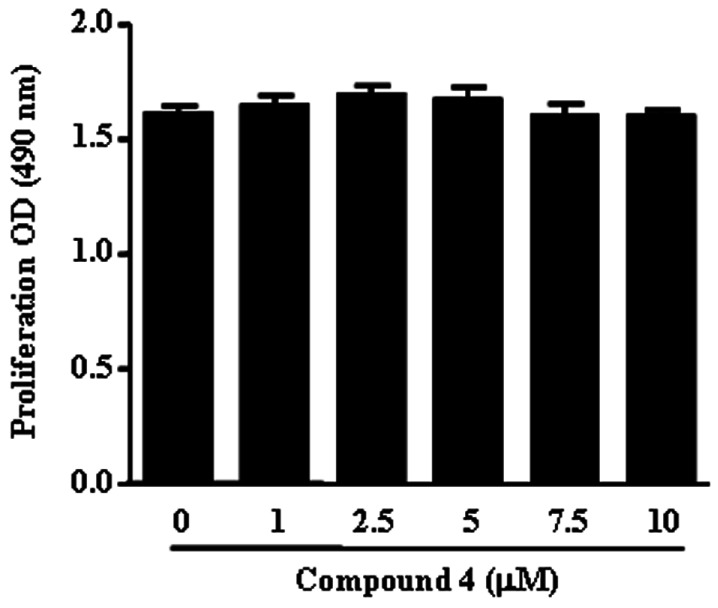
 XML Download
XML Download